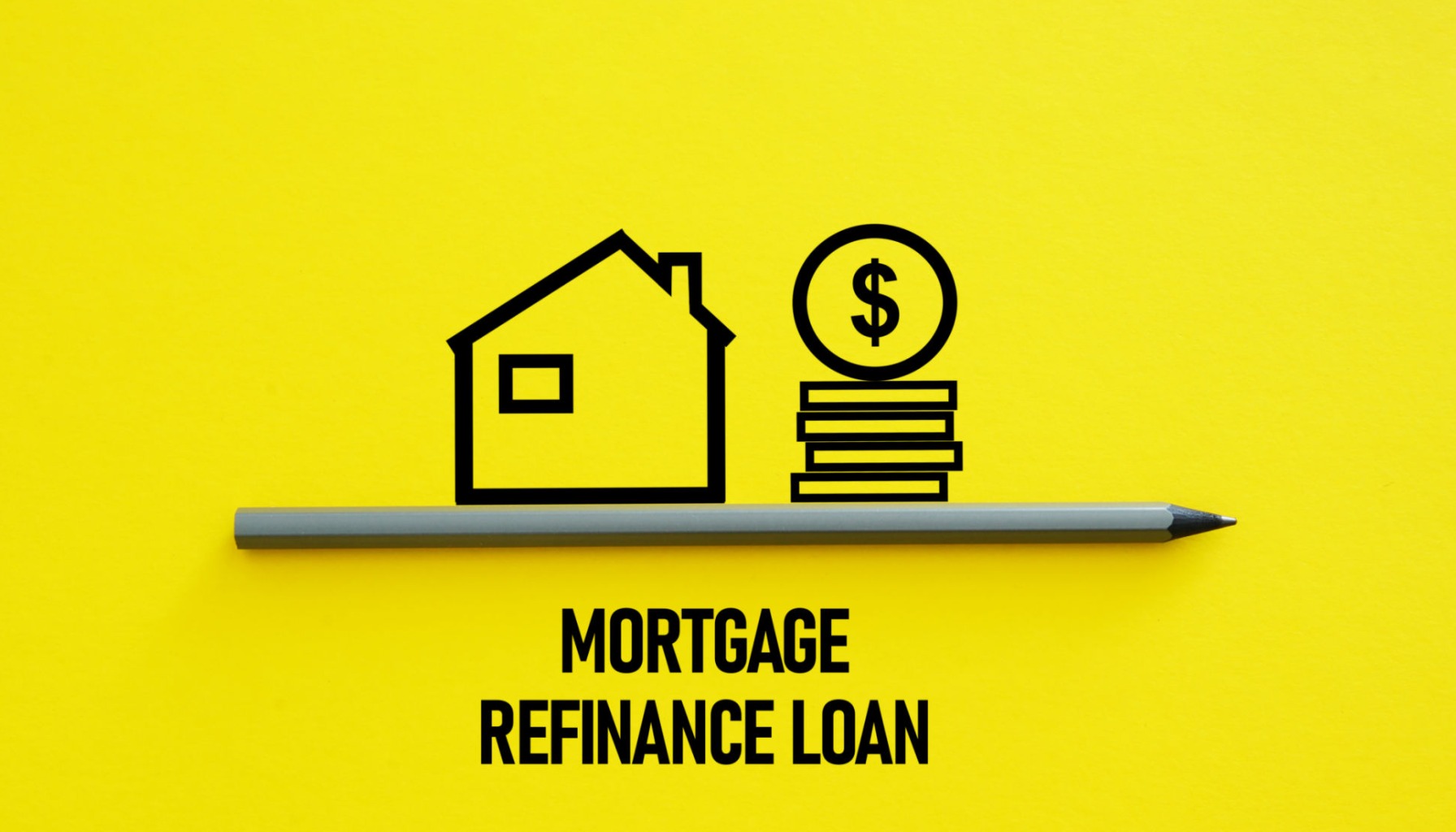It's a relief for many homeowners to see that mortgage rates are on the move, and for those considering refinancing, the 30-year refinance rate drops by 36 basis points today, landing at a more accessible 6.56%. This is a welcome change from last week’s average of 6.88%, and it means that if you're looking to adjust your current mortgage, now might be a great time to explore your options.
These kinds of drops are definitely worth paying attention to. This recent drop, as reported by Zillow, signals that lenders are adjusting their offerings, and for borrowers, it translates into potential savings on your monthly payments and over the life of your loan.
Mortgage Rates Today, Nov 10: 30-Year Refinance Rate Drops by 36 Basis Points
What This Drop Really Means for Your Wallet
So, what exactly does a 36 basis point (or 0.36%) drop in interest rate mean for you? Let's break it down. Imagine you're looking to refinance a $300,000 loan.
- Before the drop: At an average rate of 6.92% (the rate before this recent decrease), your monthly principal and interest payment would be approximately $1,983.
- After the drop: At the new average rate of 6.56%, that same payment drops to about $1,898.
That’s a difference of $85 per month! Over a year, that's $1,020 in savings. And over the typical 30-year term of a mortgage, those savings can really add up, potentially saving you tens of thousands of dollars. It's not just about the monthly cash flow; it's about the long-term financial impact.
Mortgage Rates Today: 30-Year Refinance Rate Falls by 11 Basis Points
While Zillow reported a larger 36 basis point drop to 6.56% for the 30-year fixed refinance rate on Monday, it's also worth noting that on a slightly different timeframe, it was down 11 basis points on another day, reaching 6.56% as well. This might seem like a minor detail, but it highlights the dynamic nature of mortgage rates. They can move daily, even hourly, influenced by a complex interplay of economic factors.
This indicates that the market is actively adjusting. What's crucial here is that the overall trend is downwards for refinance rates, which is the good news.
Other Rates See Significant Declines Too
It’s not just the widely popular 30-year fixed refinance rate that’s getting a boost. Zillow’s data shows other beneficial shifts:
- The 15-year fixed refinance rate also saw a significant decrease, falling 40 basis points from 5.84% to 5.44%. This is fantastic news for those looking for shorter loan terms and even bigger savings over time.
- Even the 5-year Adjustable-Rate Mortgage (ARM) refinance rate experienced a notable drop of 45 basis points, moving from 7.35% down to 6.90%. While ARMs can be riskier due to potential future rate increases, a lower starting rate can be attractive for some borrowers, especially if they plan to move or refinance again before the rate adjusts.
Why Are Rates Moving Down Now?
This recent downward trend in mortgage rates isn’t happening in a vacuum. Several big economic forces are at play, as I’ve observed in my years covering this space:
- Federal Reserve Actions: The Federal Reserve has been busy cutting its benchmark federal funds rate throughout 2025. This is a move designed to stimulate the economy. While mortgage rates aren't directly tied to this rate, it does influence the overall cost of borrowing. Even though mortgage rates haven't always perfectly mirrored the Fed's moves – sometimes ticking up slightly after announcements – the general direction of lower Fed rates tends to push mortgage rates down eventually.
- Treasury Yields: Mortgage rates tend to follow the 10-year Treasury yield more closely. When there's economic uncertainty, like during the government shutdown in late September, investors often flock to safer assets like Treasury bonds. This increased demand can push yields down initially. However, as the market digests information and investor sentiment shifts, these yields can rise again, which we’ve seen happen in early November 2025, with the 10-year Treasury yield showing an upward trend and, consequently, mortgage rates following suit.
- Government Shutdown Uncertainty: The recent government shutdown, while not directly causing mortgage rate drops in all instances, creates a ripple effect. It impacts the release of crucial economic data that the Fed and investors use to gauge the economy's health. This lack of clear data can add volatility to the market. On top of that, government-backed loans (like FHA and VA mortgages) faced processing delays, which can inconvenience borrowers. Historically, shutdowns can sometimes lead to lower rates due to a “flight to safety” by investors, but the current environment is complex.
- Broader Economic Trends: Inflation and the overall robustness of the economy are always major players. If inflation seems to be under control and the economy is showing signs of slowing, lenders might offer lower rates to encourage borrowing and spending. Conversely, if inflation remains stubbornly high, rates might stay elevated.
Refinance Timing: Locking in Before Potential Hikes
This is where personal expertise comes in. While the current trend is downward, the market is unpredictable. Experts are divided on what will happen next. Some see stability, while others anticipate further small movements – up or down.
My take? If you've been thinking about refinancing and these current rates work for your financial goals, now is the time to explore locking in that rate. Waiting for potentially even lower rates is a gamble. If rates do start to climb again, you could miss out on significant savings opportunity. It’s always a good idea to get personalized quotes to see where you stand.
Recommended Read:
30-Year Fixed Refinance Rate Trends – November 9, 2025
Comparing Your Refinance Options: 30-Year Fixed vs. 15-Year Fixed
With these rate drops, it’s a great opportunity to re-evaluate your refinance choices:
- 30-Year Fixed: This remains the most popular choice for a reason. It offers predictable monthly payments for the long haul and a lower monthly payment compared to a 15-year loan. It's excellent for managing cash flow and affordability. The recent drop makes it even more attractive.
- 15-Year Fixed: If you can comfortably afford the higher monthly payments, a 15-year fixed refinance offers substantial savings. You'll pay off your mortgage twice as fast and save a significant amount in interest over the life of the loan. For instance, with the 15-year rate falling to 5.44%, this option becomes even more compelling if your budget allows.
It’s not a one-size-fits-all decision. I always advise clients to consider their financial stability, future income expectations, and how long they plan to stay in their home when choosing between these two.
The Bottom Line
Seeing a 30-year refinance rate drop by 36 basis points to 6.56% is excellent news for homeowners. Coupled with decreases in 15-year and ARM rates, it presents a prime opportunity to potentially lower your monthly payments and save on interest.
While market conditions can change quickly, these current rates are significantly better than what we saw at the start of 2025. My advice? Don't just read about it – take action. Get pre-approved, compare offers from different lenders, and decide what's best for your financial future. The savings can be very real.
“Invest Smart — Build Long-Term Wealth Through Real Estate”
Norada's team can guide you through current market dynamics and help you position your investments wisely—whether you're looking to reduce rates, pull out equity, or expand your portfolio.
Work with us to identify proven, cash-flowing markets and diversify your portfolio while borrowing costs remain favorable.
HOT NEW TURNKEY DEALS JUST LISTED!
Speak with a seasoned Norada investment counselor today (No Obligation):
(800) 611-3060
Recommended Read:
- When You Refinance a Mortgage Do the 30 Years Start Over?
- Should You Refinance as Mortgage Rates Reach Lowest Level in Over a Year?
- NAR Predicts 6% Mortgage Rates in 2025 Will Boost Housing Market
- Mortgage Rates Predictions for 2025: Expert Forecast
- Half of Recent Home Buyers Got Mortgage Rates Below 5%
- Mortgage Rates Need to Drop by 2% Before Buying Spree Begins
- Will Mortgage Rates Ever Be 3% Again: Future Outlook
- Mortgage Rates Predictions for Next 2 Years
- Mortgage Rate Predictions for Next 5 Years
- Mortgage Rate Predictions for 2025: Expert Forecast



